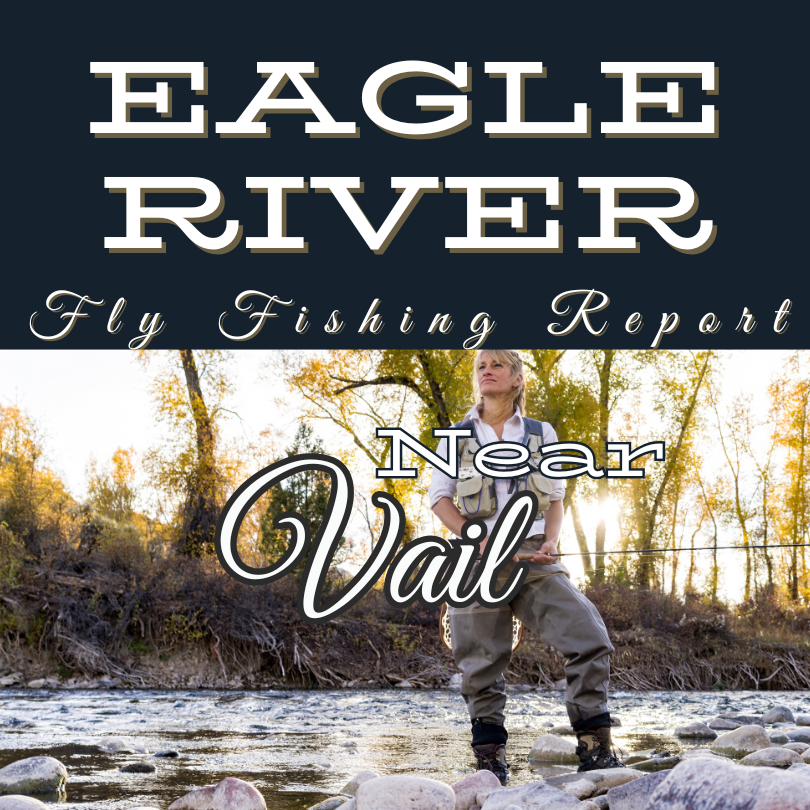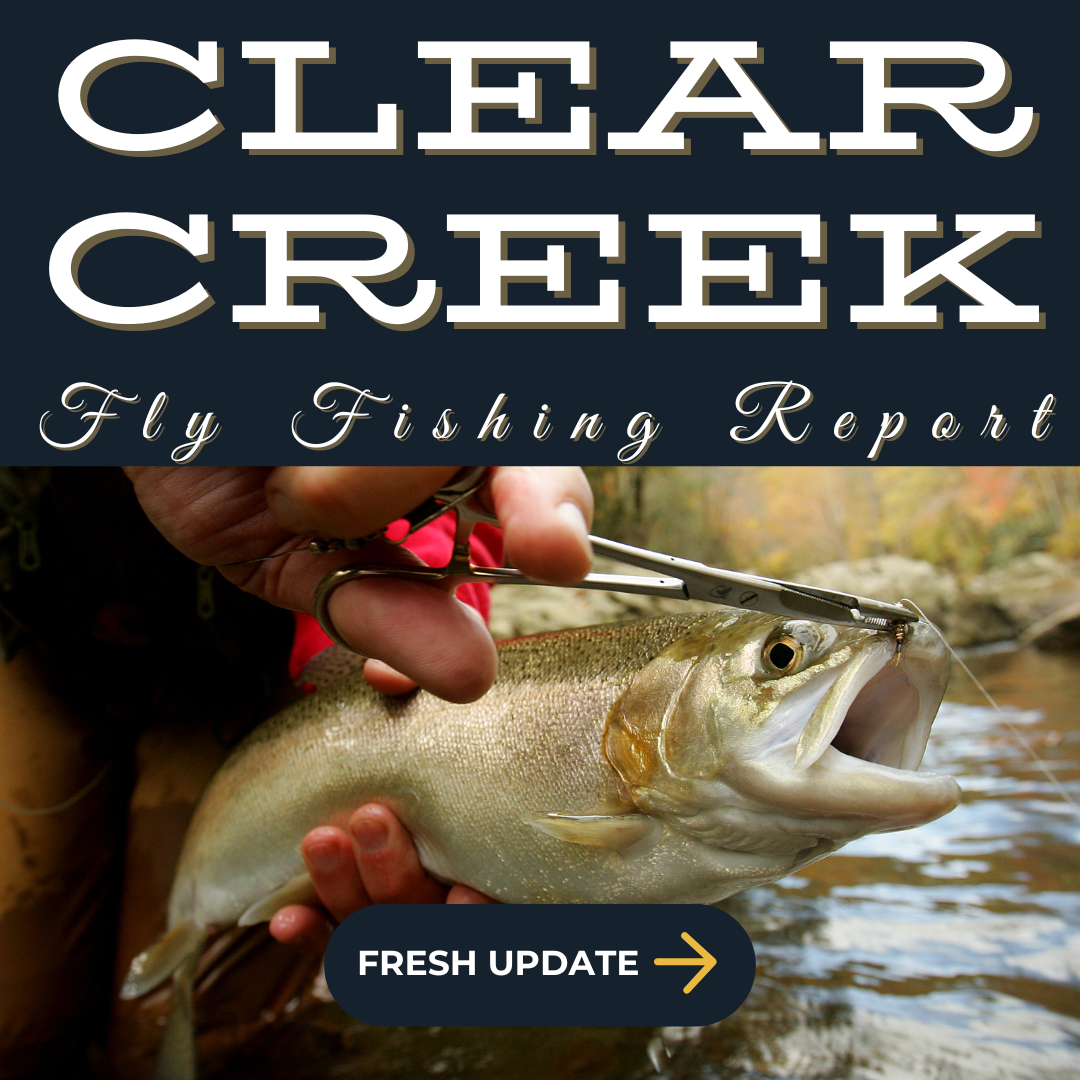The Eagle River, a 60-mile freestone stream in Colorado's Vail Valley, originates near Tennessee Pass and flows northwest to join the Colorado River at Dotsero. This river offers diverse fly fishing opportunities across its upper, middle, and lower sections. The upper stretches near Minturn are characterized by fast currents and pocket water, providing excellent habitat for brown trout.

Listen to the Podcast!
The Eagle River in March is a tale of two waters—the upper section still feeling winter’s grip, while the lower stretches near Gypsum begin to wake up with pre-spring activity. Flows are still low, and trout are sluggish early, but afternoon sun and the first signs of Baetis hatches are giving fly anglers reason for optimism.
Nymphing remains king, but on milder afternoons, you might find some midges or Blue Wing Olives bringing trout to the surface. Streamer fishing? Still hit or miss, but if you're willing to work deeper pools and soft seams, you might just entice a pre-spawn brown looking for a meal. Don’t expect easy fishing, but those who play the long game can still find success.
Conditions Summary
- Flow Rate: 55-75 CFS (Low, but stable)
- Water Temperature: 36-40°F
- Clarity: Mostly clear with occasional color on warmer days
- Best Times: Late morning to mid-afternoon
- Star Rating: ⭐⭐⭐ (3/5 – Low flows and cold water make it technical, but fish are feeding)
River Flow Chart
Eagle River Hatch Chart
| Month | Primary Hatches | Effective Patterns |
|---|---|---|
| February (Previous Month) | Midges, Baetis, Winter Stones | Zebra Midge (#20-24), RS2 (#20-22), Pat’s Rubber Legs (#10-12) |
| March (Current Month) | Midges, Baetis (BWO), Small Stones | Black Beauty (#20-24), Blue Wing Olive (#18-22), Pheasant Tail (#16-20) |
| April (Next Month) | Baetis, Caddis, Midges | Elk Hair Caddis (#16-18), RS2 (#20-22), Pat’s Rubber Legs (#12-14) |
Top Flies for the Week
- Dry Fly: Blue Wing Olive (#18-22) – Fish these on cloudy afternoons when BWOs are active.
- Nymph: RS2 (#20-22) – Key for matching Baetis emergers.
- Streamer: Mini Leech (#10-12) – Slow retrieves in deeper runs for opportunistic browns.
Tips for Fly Fishing the Eagle River in March
Seasonal Tip
Cold water means slow metabolism—trout won’t move far for food, so get those drifts dialed in.
Dry Fly
Limited action, but on warmer afternoons, you might see Baetis and midges in softer seams.
Nymphing
This is still the most productive technique—small Baetis and midges, fished deep, will get the most takes.
Streamer Fishing
Big fish are lazy right now, but a dead-drifted or lightly twitched streamer might convince a brown to eat.

Access Points
Upper Eagle River (Minturn to Avon)
- Description: Colder, higher elevation water with deep runs.
- Why Fish Here: Less pressured than lower sections, but also slower winter fishing.
- Locals’ Rating: ⭐⭐⭐
Mid-Eagle (Avon to Edwards)
- Description: Mix of riffles, pools, and cut banks—classic trout water.
- Why Fish Here: Nymphing and slow streamer retrieves can produce solid fish.
- Locals’ Rating: ⭐⭐⭐⭐
Lower Eagle (Edwards to Gypsum)
- Description: Warmer water, more active fish, and better hatches.
- Why Fish Here: Best bet for finding more aggressive trout right now.
- Locals’ Rating: ⭐⭐⭐⭐⭐
Local Regulations and Notes on Landowner Rights
- Catch-and-release recommended in most sections.
- Private property is common—watch for posted signs and stay within legal access areas.
- Flows remain low, so avoid excessive wading to reduce fish stress.
- Afternoon fishing is best, as the water needs time to warm up.
The Eagle River is slowly transitioning into spring, and while the fishing is still technical, those who time it right can find success. Nymph deep, watch for Baetis hatches, and be patient—it’ll only get better from here.
.png?width=300&height=100&name=Copy%20of%20Rise%20Beyond%20Logo%2012.31.24%20(300%20x%20100%20px).png)
.png)
%20(3).png?width=800&height=175&name=Guide%20Rating%20(800%20x%20175%20px)%20(3).png)

.png?width=938&height=313&name=Rise%20Beyond%20Logo%2010.29.24%20300x100px%20(3).png)


.png)